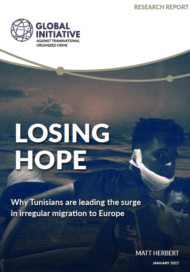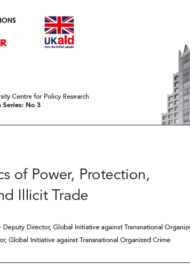Posted on 05 Jan 2022
Between 2020 and mid-2021, migration from and through Tunisia rose to levels not seen since the months following the 2011 revolution.
The reasons for this surge are complex, with no single factor responsible for the rise in departures. Rather, the decisions of Tunisian irregular migrants – who make up the overwhelming thrust behind these rising numbers – have been influenced by an interplay of economic and social factors. These include a worsening economic situation at home, poor career options, the social repercussions of unemployment or underemployment, and pessimism about the ability or willingness of Tunisia’s political leadership to improve the situation in the country.
The factors driving transit migration by foreigners through Tunisia are more opaque. They are linked principally to the risks associated with other transit routes in North Africa, such as Libya, as well as the rising number of irregular migrants living in Tunisia.
The COVID-19 pandemic has had two significant impacts on the dynamics of foreign migrants using Tunisia as a transit point. First, public-health measures implemented by the Tunisian government led to significant job losses among its migrant population. Second, it led to an inflow of migrants from sub-Saharan Africa from Tunisia’s neighbours, primarily Algeria, where they had been living, and where job losses and fears of deportation mounted during the COVID-19 pandemic.
As numbers have increased, the means by which migrants leave Tunisia and travel to Europe has also evolved. The importance of human smugglers for migrants, especially Tunisian nationals, is waning as growing numbers of young Tunisians choose instead to ‘self-smuggle’, pooling their money, sourcing boats, engines and fuel, and departing on their own.
The irregular migration surge seen in 2020 and 2021 breaks with the generally low-level flows seen throughout the decade; however, the shift is likely to be sustained over the foreseeable future.
This report begins by detailing the rise in irregular migration from Tunisia to Europe in 2020 and 2021. It next assesses the dynamics that led to the surge, including those responsible for the rise in irregular migration by foreigners through Tunisia. The report then turns to the structure of human smuggling networks along the Tunisian littoral, and the broader means through which irregular migrants embark from the country. Finally, an assessment is offered of the security forces responsible for border control and laws salient to irregular migration, along with Tunisia’s politics of irregular migration.




